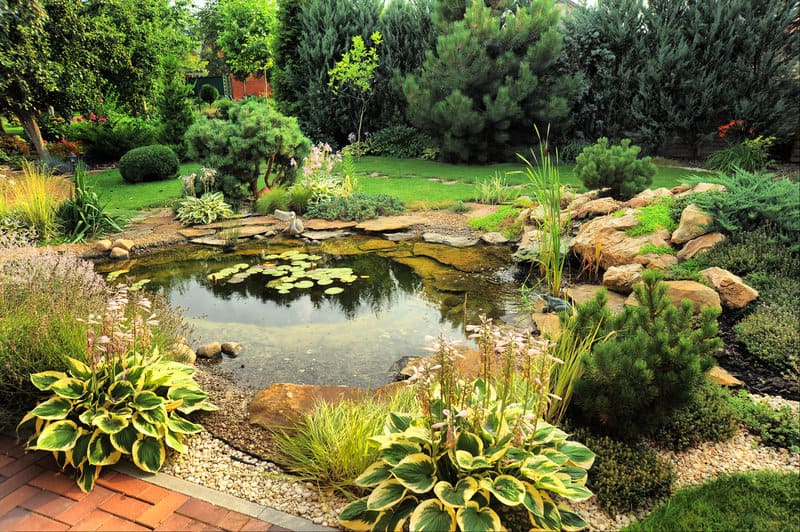CA Contractors #344056

Backyard ponds are an excellent addition to any outdoor space, but they need to be designed with care. Failure to consider all the factors can lead to a pond that is more of a nuisance than a benefit to your backyard landscape.
Here are things to consider before building a DIY pond or hiring a professional to come in and transform your landscape.
Do you prefer a higher- or lower- maintenance landscape design? Be forewarned: ponds are not a low-maintenance backyard feature. They require consistent care and attention to be healthy, clean, full of moving water (to eliminate mosquitoes) and occasionally require repairs or more heavy-duty maintenance to function properly.
It may be wise to visit your local garden center or consult with a professional landscape designer to learn more about pond maintenance to determine whether this is the right decision. You may discover that building or purchasing a fountain provides similar benefits with far less maintenance than a pond.
To keep the water relatively clean for longer periods of time, ponds need to accommodate at least 40 cubic feet of water, which is about a 7-foot by 4-foot minimum perimeter.
If you don’t have that much space, speak to your landscape maintenance crew or garden center about other alternatives, such as a dryscape creek that ends in a fountain to enjoy a similar aesthetic without using up your available backyard space.
Safety is always the number one priority. If you have small children or small dogs that love to swim – make sure the pond is fenced off when you aren’t around to prevent any potential accidents. Again, if there’s no room for a big enough pond and a safety barrier, a fountain is the way to go.
If you’re still on board for the backyard pond plan – here are step-by-step instructions.
There are several things to think about before deciding on the decision. The best site for a backyard pond is:
Before you break ground, you need to establish where the utility lines are. Mark the area where you want to dig ahead of time. Then, call 8-1-1, the U.S.’s universal Dig Safe System, at least a week before you want to start the project. This generates a visit from utility specialists who will mark or flag exactly where utility lines run through your property.
Their visit will determine whether you need to alter the site plan or shape, or whether you can move forward immediately.
We’ve mentioned 40-cubic feet of water (minimum) and the 7- x 4-feet size requirement. You also need to make sure the pond is deep enough. To accommodate pond health, cleanliness, and to support helpful aquatic plants and gold or mosquito fish, the pond should be no less than 1.5- and (optimally) 2-feet deep. If you want to have koi fish, it needs to be at least 3-feet deep.
Ponds should have rounded edges to look more natural. A quick Google image search for “pond shapes” provides plenty of ideas.
Excavate using your spade or an excavator. The pond’s edges should be sloped, but terracing is even better – providing a spot for your aquatic plants to root and creates temperature differentials for fish during warmer and colder seasons.
Get a friend or family member to help you with this part (if you haven’t enlisted someone already!). You may be pretty tired at this point, but take heart and remember how beautiful it will be when the pond’s complete.
It’s time to add your pond’s accessories and features. You’ll need some type of water pump and aeration device to keep the water moving (still water invites mosquitoes, so water movement is a must), a pond filter if you’re adding fish or want to keep the pond lower-maintenance, and a fountain is always helpful as it offers both sound- and visual enhancement.
Now you’re ready to fill the pond up with water from your hose. If you’re adding fish, add a dechlorinator. This will need to be added, as each time you add water from your hose.
You can create a beautiful border using large rocks and stones, pavers, plants that provide seasonal interest, etc.
Once you’ve cleaned up from the landscape, and verified all of your pond accessories are working properly, it’s time to add aquatic plants and fish. If you are adding fish, let your pond cycle for a couple of days and then add them.
Congratulations on a job well done. Grab a friend, take a seat, and admire your hard work. If you just read through this and determine it’s more than you’re interested in doing on your own, contact Bay Area Landscapes and we’ll design and/or install the pond for you.